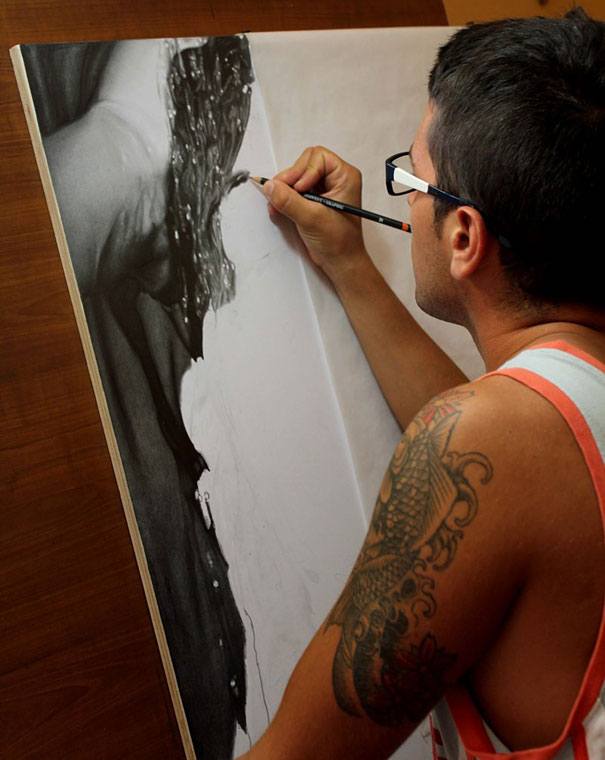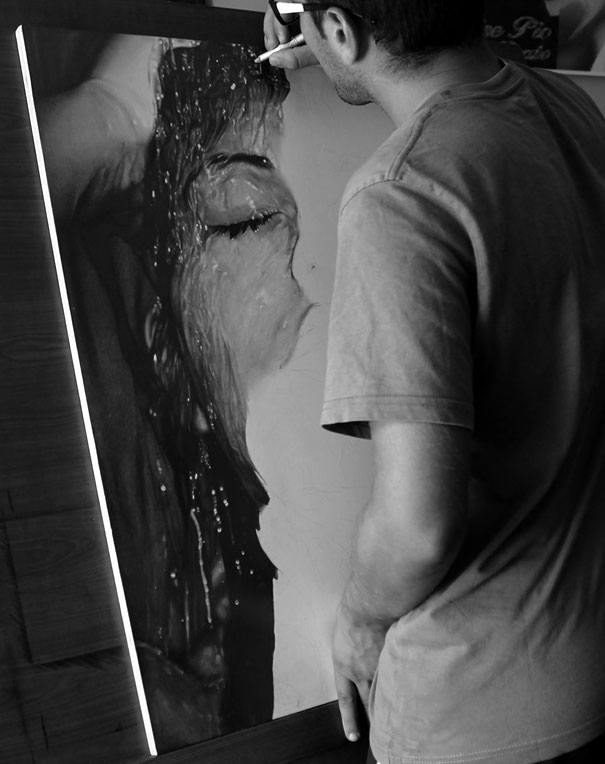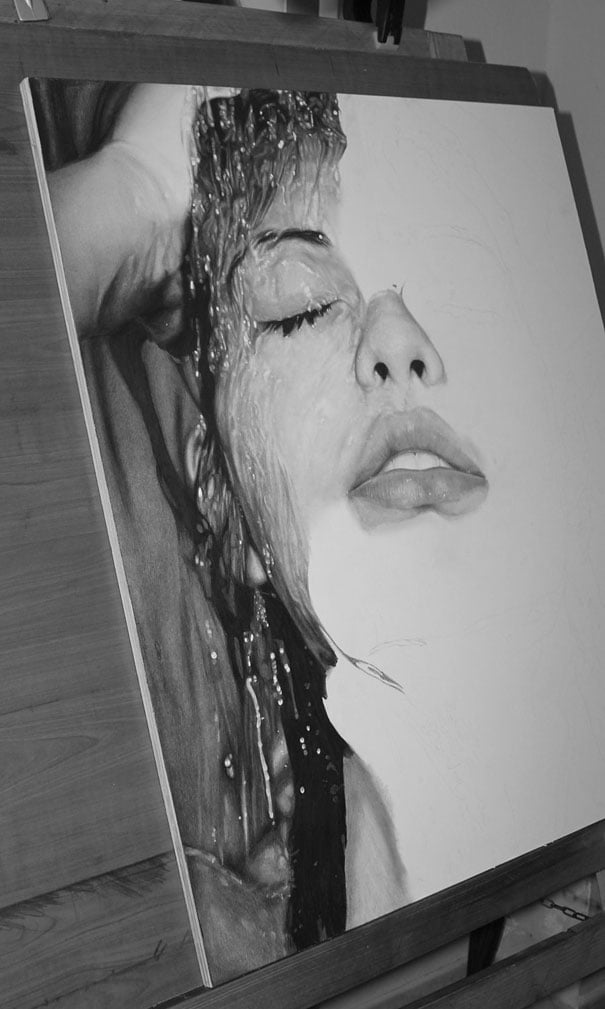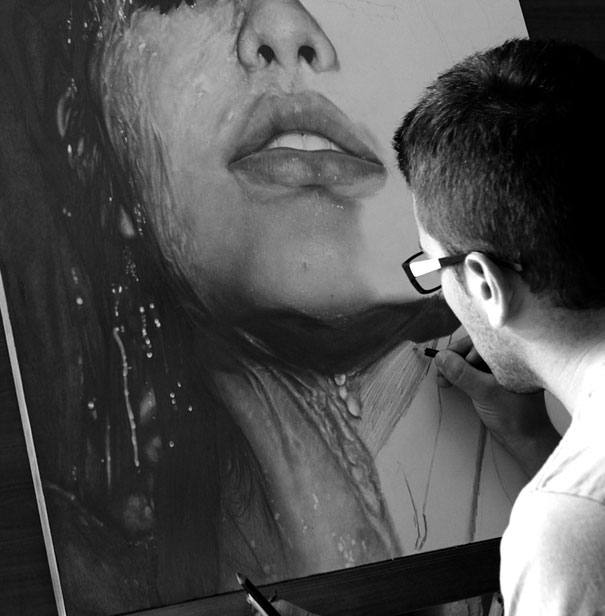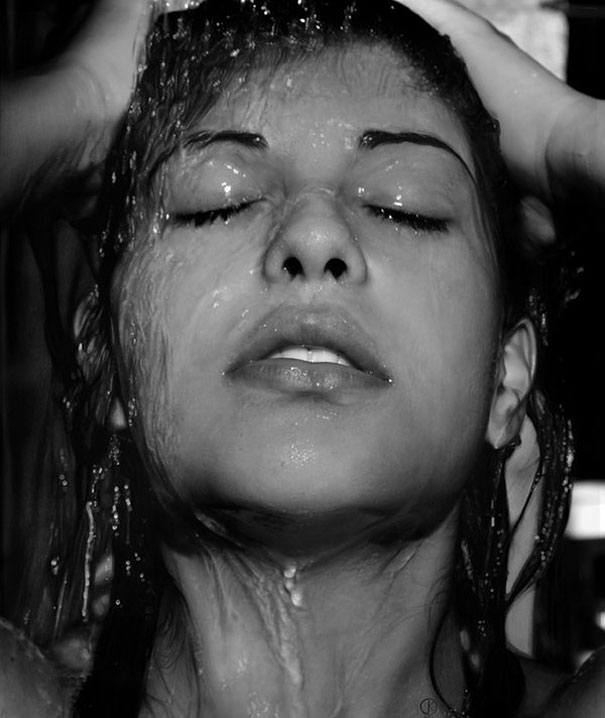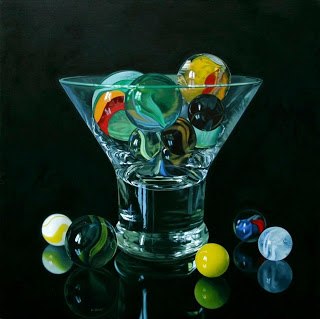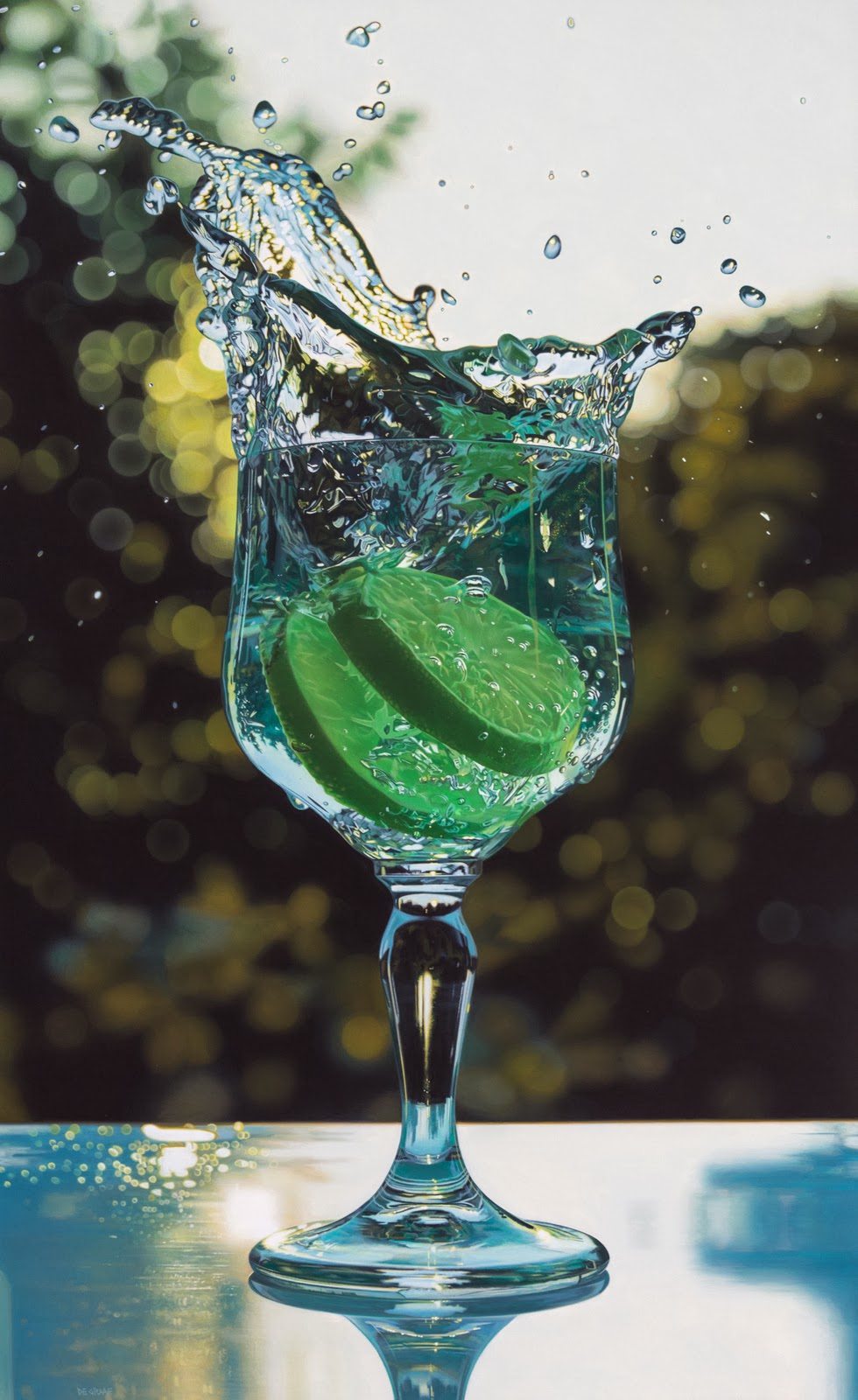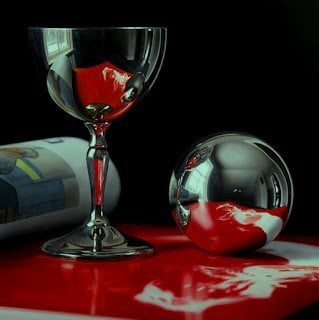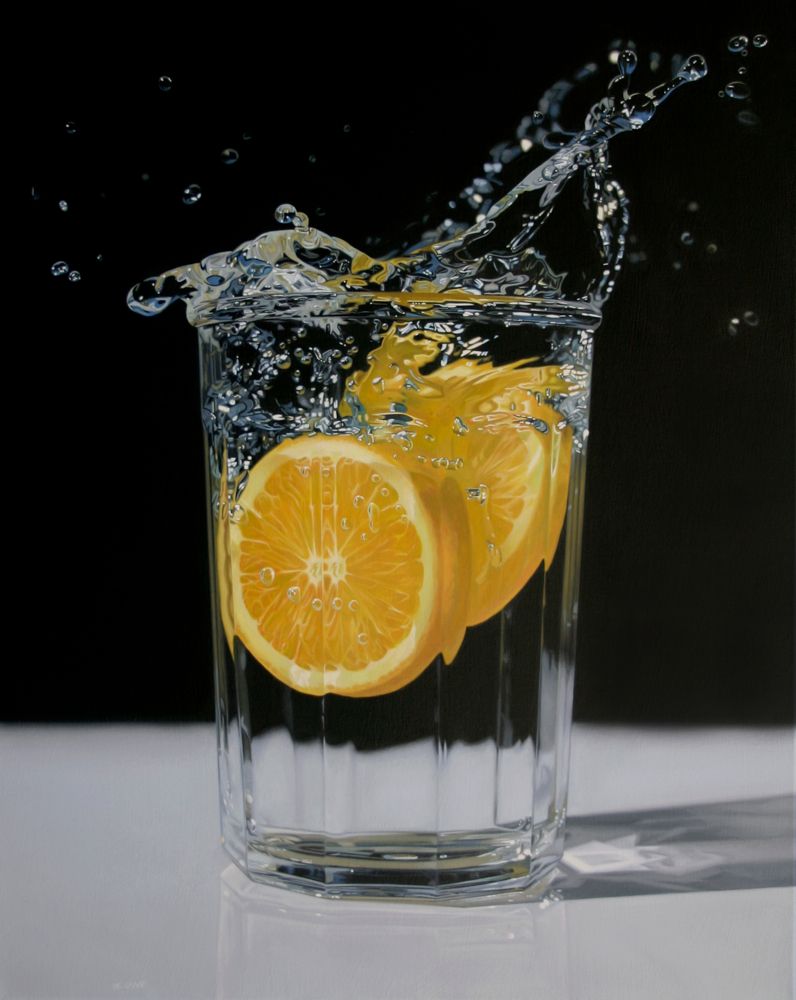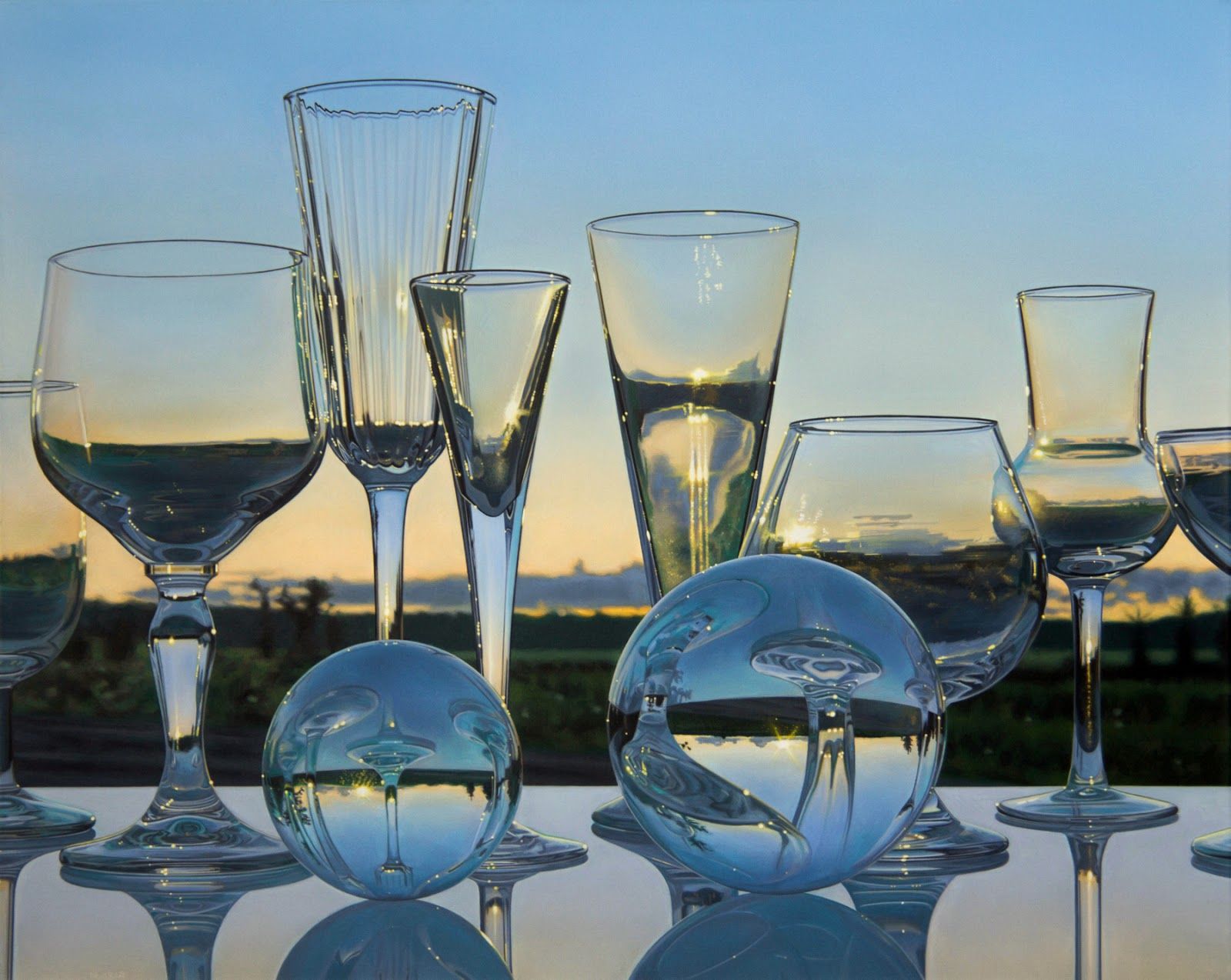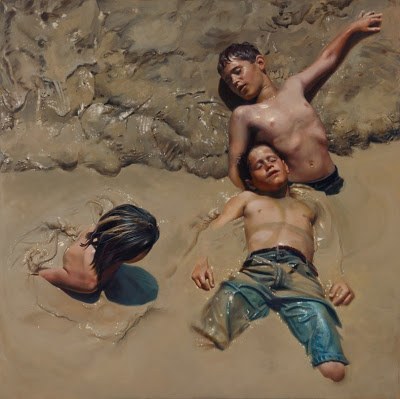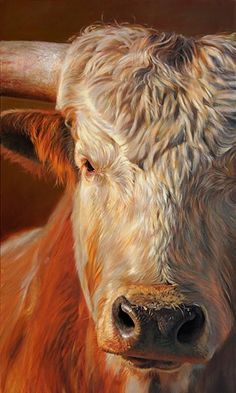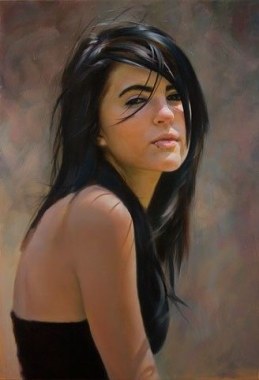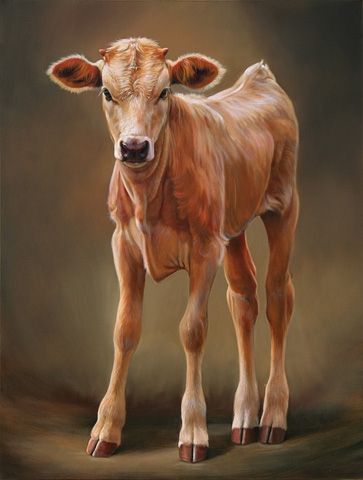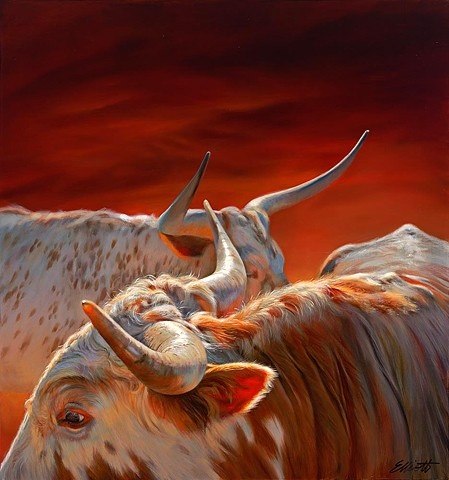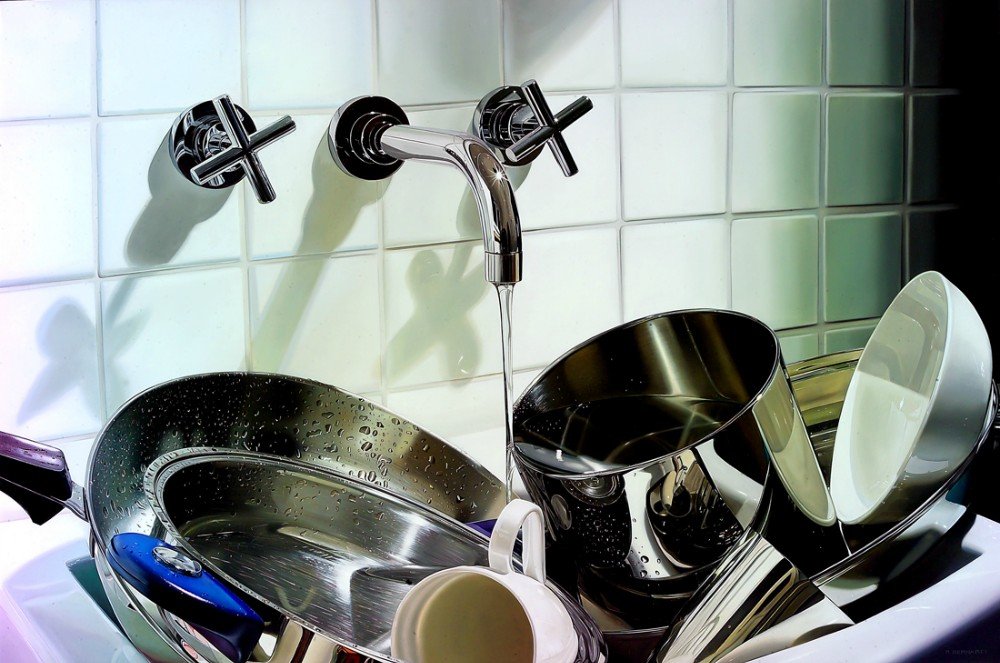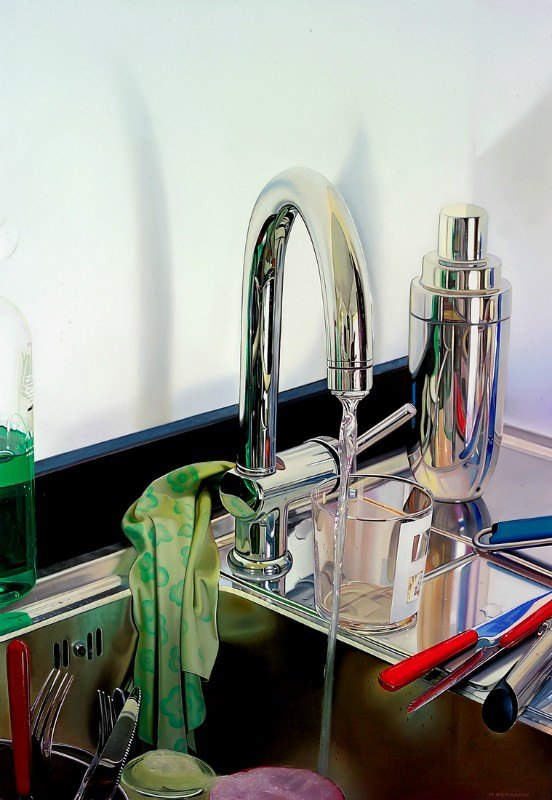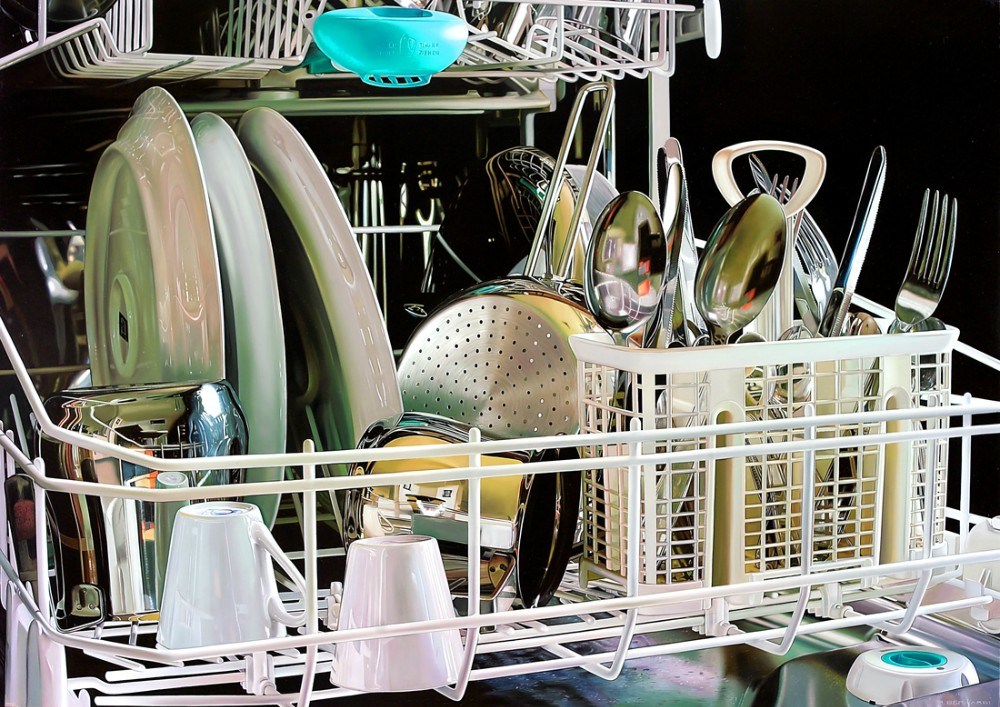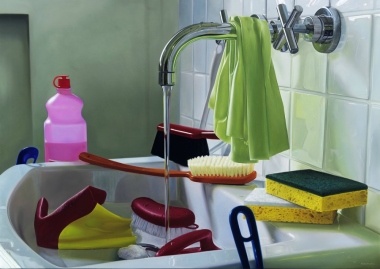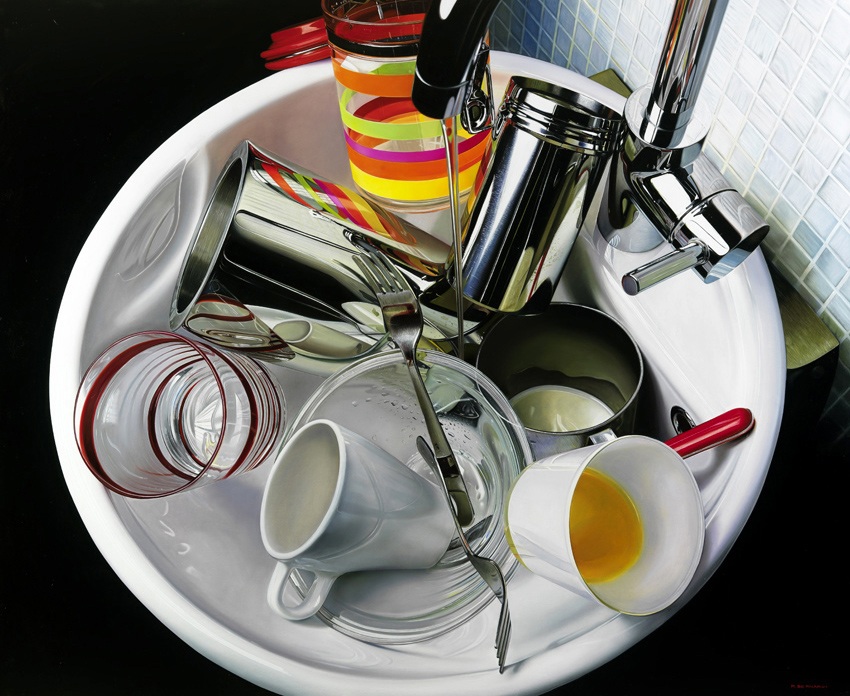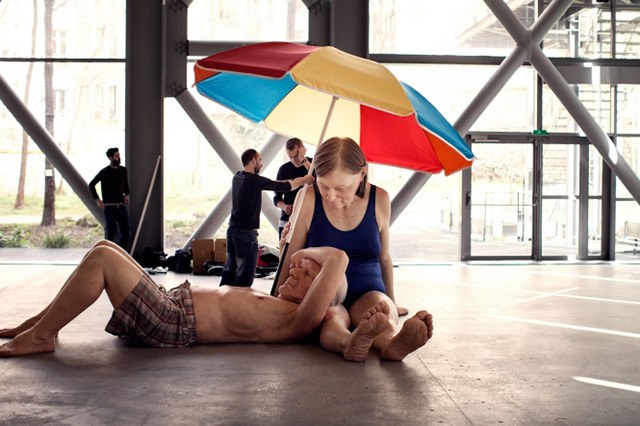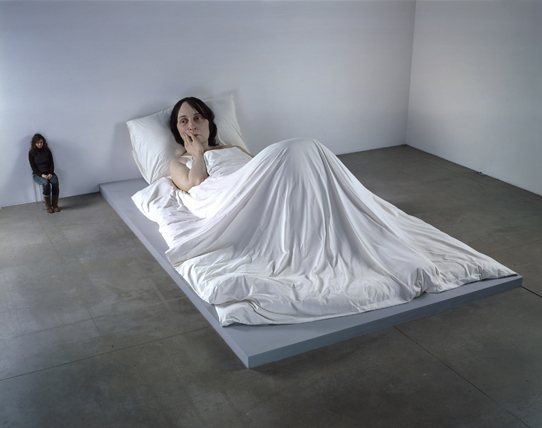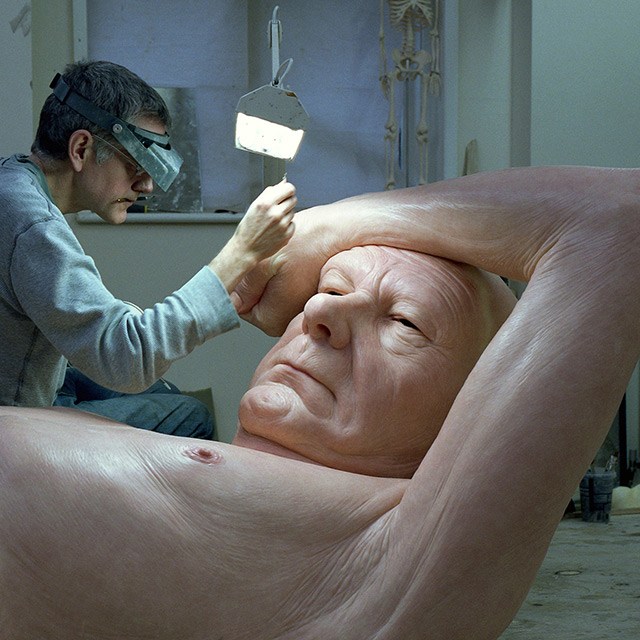Hyperrealistic art is a type of sculpture or painting that looks a lot like a high-resolution photograph.
Hyperrealism initially started in the early part of the 21st century as an independent art movement and style in Europe and the United States. It is considered an advancement of Photorealism. However, unlike Photorealism, hyperrealist sculptors and painters use photographs as a source of reference as they try to create a more detailed rendition, which exhibits emotions and tells a story.
Hyperrealistic art often entails a softer, much more complex focus on a subject. Hyperrealist artists center much of their attention on emphasizing the details of a particular item, presenting it as a living, tangible object.
These objects and scenes are meticulously detailed to create the illusion of a reality not seen in the original photo. Here is a list of 30 hyperrealistic art pieces by talented artists that have motivated many and may inspire you, as well.
Diego Fazio
Diego Fazio is a self-taught hyperrealistic artist. He was born in 1989 in Lamezia, Italy. He also goes by the name DiegoKoi. In fact, he began drawing the Koi carp early in his career.
In March 2012, from about 7,000 participants from all over the world, DiegoKoi won the selection of International Art Prize Arte Laguna of Venice with his hyperrealistic art piece “Judgment.” He also won the finalist selection of the prize Cairo in Milan, one of the most prestigious awards in Italy, with his work “Raptus.”
Jason de Graaf
Jason de Graaf explains that when he creates hyperrealistic art, he tries to tell a story, or “hint at something beyond what is actually painted.”
He explains his technique of choosing subjects that have meaning to him or are objet d’art from his life. He intuitively chooses colors and composition with the objective of infusing his paintings with mystery and mood. Additionally he tries to remain open to new ideas as the painting unfolds.
Pedro Campos
Pedro Campos was born in Madrid in 1966. His hyperrealistic art is a clear reminder of the beauty and the detail of all things.
When creating his art, Campos chooses marbles, fruit, books, and soda cans as subjects for a variety of reasons. There is a complexity of these objects, which is hidden in daily life. He believes these objects possess and represent light and purity.
Pedro Campos formed the Official School of Conservation and Restoration of Works of Art in Madrid in 1988. He has worked in the restoration of paintings and other art forms in Spain, and as an illustrator for various international advertising agencies.
Teresa Elliott
Teresa Elliot is another creator of hyperrealistic art. She has been highlighted in numerous publications and has won countless awards, including the 2009 and 2010 People’s Choice from Coors Western Art Exhibit in Denver.
Teresa was raised in Texas where she found a connection with animals on her grandfather’s farm. She says, “It became a place and time to know my subject in their entirety. The study of animal bodies as landscape and this connection to something limitless keeps the process forever interesting.”
Roberto Bernardi
Roberto Bernardi started painting when he was very young. He was born in Todi, Italy on May 18, 1974. In the first half of the eighties, Bernardi completed his first hyperrealistic art pieces in oils. He was dedicated in learning all he could about pictorial techniques, which influenced his artistic arrangements significantly.
In 1993, Bernardi moved to Rome and started restoration in the church of San Francesco a Ripa. He turned to hyperrealistic painting shortly afterwards.
Roberto Bernardi’s paintings are found around the world in such places as New Zealand, Hong Kong, Canada, Greece, the United States, Belgium, Japan, Mexico, Germany, and England.
Ron Mueck
Ron Mueck is a sculptor based out of London, England. He is a former puppeteer and model maker for children’s’ films and television. Mueck also creates hyperrealistic art.
Mueck has been creating art sculptures since 1996. His technique entails sculpting in clay, making a plaster mold around a form, and then replacing the clay with a mixture of resin, silicone, and fiberglass.
Most of his work is comprised of sculpturing human-like figures, both large and small.
Featured photo credit: Naufragio/Roberto Bernardi via designalmic.com

